Here
in Philadelphia, there are trees and then there are trees.
On
this particular day, I was hunting for the first kind of tree.
It
goes by the name of mountain laurel. It’ll never be the biggest tree in the
woods. It’ll never be the kind of tree
that shows up on the nightly news but I’ve been on the lookout for mountain
laurel for weeks now.
I’ve
been trying to catch its flowering, which I’ve heard is spectacular.
I
already knew where they were growing.
They were up there, off the trail…
…typical
of the mountain laurel, sprouting up on a steep and rocky hillside called a ravine.
That’s
French for a violent rush of water
and it describes the type of land that makes the shape of a vee,
the landscape that forms around a narrow valley cut deep with a running
stream.
That’s
exactly where I was, on a trail called the Ravine Loop.
Away
from the path, up the sharp banks of the stream?
That’s
mountain laurel country.
That’s
why they’re so hard to find. They’re off
the trail.
They’re
way up here…
…growing
on the pitched and slanted shores of the Ravine Loop.
It’s
hard to get up here, rough going and slippery with rotting compost. I had to keep my eyes to the ground and so I
noticed the small leaves popping out of the woodland carpet.
These
are the other kinds of trees. Big trees.
Here’s
a chestnut oak…
…and
here’s a tulip poplar.
The
big trees, they are a-coming. Some of
them are already staking out their claim.
Once
they take over, they can choke out whole fields of sunshine, drowning out the
understory with their high green canopy.
They don’t leave much room for the smaller trees like the dogwood and
the redbud, the crabapple and the hawthorn.
And,
of course, my prey for this afternoon…
…the
mountain laurel…
…that
small tree with the dark evergreen leaves and the crooked trunk.
Its
bark has a very stringy and shaggy texture, like an old frayed rope that’s been
too many days out to sea.
Its
flower would be a real boon to my blog.
For starters, it’s the state flower of Pennsylvania…
…usually
depicted next to our state bird, the ruffled grouse.
Their
flowers grow in groups of twelve or more, they say, at the terminal ends of the
branches, upright above the leathery leaves.
From
what I’ve seen in the field guides, the flowers are bright and showy,
resembling little cups. Something found
in a child’s tea party. They’re white or
pink and each flower has ten long pistils, purple at the tips, that clamp down
on the petals and push the flower open.
Even
more remarkable, they’re supposed to be a very action-packed bloom.
They are
spring-loaded, wrote
John Eastman in his field guide for forests and thickets, and they actively bombard an alighting insect with pollen.
You can test
this mechanism yourself with a pin or grass blade. The slightest touch…
..and
he goes on and on. I wanted very badly
to test this mechanism myself…
…but
I was too early. They were just barely
budding.
I’ll
come back here next week to catch them in bloom but, by that time, this whole
story called Philly Trees will be over.
This
is the final post, the last adventure.
This is the big finish and this is exactly where I want to end this
blog…
…off the trail.
Off the trail is not for the
squeamish or the faint-hearted. Some
people call it lost or astray or adrift but those are all judgment calls. Really, it just means that you’re on your
own…
…and
now you’re trailblazing, using the map that’s being written in your own head…
…step
by step, turn by turn, ways lead on to
ways.
A
couple tricks to walking off the trail.
First, no shorts. Only a bumpkin
wears shorts in the woods. Same goes for
flip-flops. Good boots are a must. Expect them to get muddy.
When
you’re trailblazing, it’s also best if you talk to yourself but I would caution
against idle conversation and meaningless chit-chat.
Better
to talk about what you’re seeing. Me? I like to name-drop the trees and plants that
I pass along the way.
When
spoken aloud in the wilds, my monologue becomes an invaluable tool. The names that I’ve dropped along the
pathless woods become my best landmarks when trying to retrace my steps…
…when
heading back to the trail.
And
make sure you bring a good snack.
THE SIGN OF THE
PEOPLE CROSSING
People are always asking me, Hey, Jon Spruce, can you recommend a good
snack for a long hike?
There are many good choices. Fresh, seasonal fruits and vegetables will
never do you wrong. I lean towards local
produce but I wouldn’t want to deny anybody the citrus, the banana or the
macadamia nut. Edward Abbey always
brought oranges when wandering the American desert.
Some people prefer trail mix and I
have no problem with trail mix. Trail
mix will never steer you off course.
But I’d like to take this
opportunity to fervently champion my absolute favorite trail snack, one of
Turtle Island’s greatest contributions to world cuisine…
…that handy, groovy gyre of a
sandwich we call the burrito.
By far, this is my favorite way to
fuel up for a hike.
It’s a sandwich for both the body
and the mind.
Its name is Spanish for little donkey and it’s called a burrito for the way it resembles those
bedrolls tied to the backs of saddles…
…swaying to the rhythm of a swinging
tail and a dusty rump.
Now,
a good burrito will have many different ingredients wrapped up inside that
tortilla. Each ingredient comes from its
own time zone.
It’s
true.
There
are foods inside the burrito that take a long time to cook, like the rice and
the beans.
Then,
there are the ingredients that take even longer to make, foods that need to be
tended and cultured, like the sour cream and the cheese.
And
then there are the ingredients that are meant to be cut and diced, mixed and
smashed fresh and spontaneously, things like salsa and guacamole, the shredded
lettuce and the plucked cilantro.
Roll
it all up. All those different time
zones, coiled together for every single bite, it’s the old versus the new, the
cooked versus the raw, the cultivated versus the spontaneous, assembled into a
spiral, just layers and layers of tasty goodness.
Perfect
snack for hiking through the palimpsest.
I
picked up this particular burrito just around the corner from the Ravine Loop
trail, at the Machismo Burrito Bar…
…in
the Andorra Shopping Center at the westward terminus of Henry Avenue.
Andorra? It’s Spanish for shrub-covered land, although it could also mean a female traveling companion.
I
come here often, and not just because it’s near one of my favorite wild places
in Philly. I come here when I feel
off-kilter and out-of-whack. This place
soothes me, sets me straight.
This
little mall, this Andorra Shopping Center…
…this
is one of the most spiritual, most harmonious places I’ve ever found in the
city.
No,
no, no, you don’t understand. You think
I’m joking.
I’m
telling you. This shopping center is
overflowing with balance and concord…
…the
champion of the wind-water dance we
call feng-shui.
Every
shop here has its own opposite. Or its
own counterpart, its own foil.
There’s
a Radio Shack next to a Game Stop. There’s
a Kolhs department store and a Dollar Express.
There’s a branch of the library but there’s also a Bargain Book
Warehouse.
There
are post office mailboxes…
…right
in front of a Parcel Plus.
For
food, I have almost the entire globe: Italian, Chinese, Thai, Mexican, a McDonald’s
and a Saladworks, plus a frozen yogurt confectionary and an Acme grocery store.
There’s
an Applebee’s here, which advertises itself coast-to-coast,
hemisphere-to-hemisphere as a Neighborhood Grill and Bar.
On
this particular day, standing outside its committee-colored awning, they are
blaring Kashmir.
By
the hammer of the gods, I love this song.
I should listen to this song every day.
I am a traveler of both time and
space.
This
Applebee’s? They’re such a kind council,
like the song says: elders of a gentle
race.
They
just want to please me.
All
the research and development they put into their menu, it’s because they
respect my need for familiarity and rhythm, my fear of risk, my anxiety of the
unknown.
Nothing
untested, nothing too sour or too crabby will ever slip by them, not on their
watch, and yet they still give me an opportunity to satisfy that very human
need to try something new, like pineapple on a pizza.
There’s
a place to groom your pets…
…right
down the sidewalk from a nail salon and right across the parking lot from a
human hair-do factory, a Hair Cuttery franchise.
There’s
a dojo here, called AmeriKick…
…and,
just down the sidewalk, there is something called Mathnasium…
…the
classic battle still raging strong, brains versus brawn, jocks versus nerds.
And
that Jenny Craig store? Right across the
parking lot, there’s a GNC Live Well outlet, nutrition and diet for both men
and women in the same shopping center.
This
is the epitome of the town square, the global hearth, my Shangri-La beneath the summer moon.
I
just hope it doesn’t stop here. This is
not the best way to end anything.
That’s
the danger of reaching the epitome.
That’s the worst part about standing at the acme.
It
could all be downhill from here and then this place would just be a sad
reminder of our past glories. No repeat
championship.
If
something goes terribly wrong, then this will become a ghost town. Each store would turn into a memorial of the
human contributions: the invention of numbers, coin and paper…
…the
way we domesticated the zoo…
…first
animal to walk upright.
This
is the human niche and people come here just to sit in its center.
It’s
true. I’ve seen it.
If
you walk into the center of this parking lot, you’ll see people sitting in
their cars, hooked up to their cell-phones with papers spread out on the
passenger seats...
…or
they’re sitting in their white vans or police cruisers catching up on silence
and solitude, munching away in their
school buses or Water Department trucks, being very human.
Perhaps
they come here because they can feel its balance, can feel the way this place
harnesses both the yin and the yang, but me?
I
prefer a different kind of balance. I
prefer the kind of order found in the wilds.
People
are always asking me, Hey, Jon Spruce,
where are you?
If
I use that old map, then I am way out there, man…
…all
the way at the back of the map, almost at the very limits of its horizon.
Actually,
I’m more to the left, more to the south, of that black bear family…
…there
it is.
This
is south of the Wissahickon but still at the northwest border of Philadelphia, where Ridge Avenue turns into
Ridge Pike.
According
to the map, it’s just rolling meadows.
It’s lazy country.
But
that’s in the past.
Right
now, it’s working hard.
This
part of the map was kept as meadows and farms and pastures from the time of
William Penn until 1965, within living memory.
This
is the Schuylkill Center. In the
sixties, it was given the title of wilderness…
…given
permission to go to seed, gone to woods.
This
is where I can see the wilds taking over, the future of the Philly woods.
This
is where I can hunt down Thoreau and his preservation
of the world.
Here,
I can see how the palimpsest is written.
I
can get here by taking highway 76 but I prefer taking the back roads, snaking
my way through the west Philly neighborhoods past the zoo, through Fairmount
Park and the west-side of the Laurel Hill Cemetery.
On
this particular day, in between the Shofuso Japanese House and Centennial Lake,
while waiting in line for the green light…
…a
seed landed on my windshield.
That
might be an elm but it’s probably a zelkova.
I
continued down Belmont Avenue, turning left at the cliffs of Manayunk and up
Umbria Avenue.
That’s
my favorite Deer Crossing sign in the
entire city.
No,
no, no, you don’t understand. You think
I’m joking.
It’s
true. This is the way to the wilds. That’s the sign you pass on your way to the
young woods of the Schuylkill Center.
Exactly
opposite of this sign, on the same road, in the direction back towards town,
there is this sign.
I
don’t know about you but I don’t get many signs like that in my life. I’d like to think I’ll notice these things,
with or without the blog.
FOLLOWING THE
MAYTRAIL
Contrary
to popular belief, trails can also be seasonal.
Out
there in the wilds, there are some paths that open up only at certain times of
the years, under the right kind of moon.
There
is a trail like that here in the Schuylkill Center. I can only find it in mid-spring.
I
call it a maytrail.
It
begins right near that weird sassafras.
No,
not that one. The one right next to it.
There
it is.
It’s
impossible to find this trail in the summer.
By
the Strong Sun Moon of July, this whole place is choked up with multiflora rose
and devil’s walkingstick…
…no
sign of the trail.
I
can’t find it in the winter either.
Besides, all
the trees look weird here in the winter.
I
actually need just a little bit of bushes and briars in order to see this trail…
…not
enough to block the path…
…but
just enough to show the way.
At
this time of year, the devil’s walkingstick is leafing out.
Pay
close attention to this now because, in just a few months, this will be the
largest leaf in North America.
Not
bad for a little stick.
This
is still such a young woods.
There are big trees here, and more
big trees coming, and soon these woods will look like the crowded and cultured forest of the Wissahickon instead of like this.
This will happen in less time than
it took Coaquannock to disappear off the face of the map.
Soon the big trees will dominate,
the staple species that have already mapped out their claims, trees like the sugar maple and the tulip poplar…
…the oak, the beech and the sycamore…
…the black walnut and the cherry.
There is one type of tree that is
conspicuously absent from these woods.
No evergreens. No conifers.
No hemlocks or spruces, no firs or
cedars. There is white pine but it was
obviously farmed here…
…never escaping its stand on the
other side of the maytrail.
Maybe it was planted here for
lumber…
…or to attract the right kind of
wildlife but this white pine never leaves this plantation.
It makes sense. Pines and spruces, hemlocks and firs, they
belong to an older kind of woods…
…the first kind of forest that
settled Turtle Island.
You can feel that here in the white
pine stand. It’s a place that feels
older than the rest of the woods...
…from a time out of mind.
Here at the Schuylkill Center, a
different kind of woods is taking over, the forest of flowers and fleshy fruit,
the deciduous treescape meant for all four seasons.
Fifty years into its spring, it’s the
smaller and more reckless trees that are getting these woods going, their turn
in the sun…
…and so the Schuylkill Center is currently
dominated by the redbud and the dogwood…
…the crabapple and the hawthorn.
What was it John Muir said?
Culture is an orchard…
…nature is a crab.
Down this path, I can find distinctive
features of a young woods, things like a glade.
The word comes from the Norse, by
way of bright, and it means an open passage in the woods.
Typical of a glade, I find a colony
of mandrakes.
This plant has such a short
season. It shoots out of the ground in
early April. It has to be out and open
before the upper canopy leafs out.
By the end of summer, it’s
gone. It’ll be eaten and swallowed
whole, those thick leaves and juicy stalks a favorite food for the caterpillars,
the centipedes, the beetles and the moths.
In the meantime, it produces a
super-sweet fruit called the mayapple.
There’s one.
Who eats the mayapple? Browsers like the deer and the grackle,
scurriers like the mouse and the squirrel but, mostly, the mayapple is turtle
food.
If I look even closer at the glade
floor, I can see the unfurling of the ferns.
These are some of the oldest
surviving plants still found on Spaceship Earth…
…bubbling up onto the surface of the
primordial soup over 360 million years ago when the fishes first started
crawling out of the sea, wiggling on the empty shores, the unmapped continents.
These ferns are still in their
fiddlehead phase…
…but, in less than a month, they
will be completely unfurled and this whole glade will turn into a field of
fronds.
Here in the glade, I can also find
these vigorous thickets creeping across the grass…
…these little whipper-snappers of multiflora
rose. At the very center of these
scrubs, I could probably find the remains of some poor tree that tried to grow
up in this glade.
Tenacious vines like the rose
protect these open spaces from the big trees.
Anything that might suck up all that precious brightness, even far away
in the future, better be prepared to fight...
...all year round.
Sometimes though, there is no tree in the center. It might be something like this…
Sometimes though, there is no tree in the center. It might be something like this…
…the last remaining post of an old
fence.
As I approached, a big crow darted
out of this thicket and flew fast out of sight.
Maybe this is where he was planning
to mate…
…or maybe this is her nest.
I peer inside, hoping to find some
eggs.
I can feel the crow looking at me…
…watching me from afar. There’s no need yet to start a fight. After all, I’m probably just a loud, blind
bumpkin that won’t be able to see the eggs anyway, not through all that jungle.
And I can’t. I can’t see anything in there.
Who knows? Come back here in another fifty years and
this could be a mound or a knoll.
In a hundred years, this could be a
hill…
…and who would know that there’s a
fence post buried in its center.
This is still such a tender woods.
Down this trail, I can still see the
scars…
…can still see the growing pains to
get even this far.
This is the work of the wild grape
and the poison ivy. Some of the trees
have been able to shake off these vicious vines…
…while other trees have just managed
to cope…
…stronger trees that can carry the
weight of a parasite.
Every now and then in these woods, I
can actually walk right into the middle of these struggles, the battle for the upper
canopy still raging.
There is a tree missing from that
small colony, a tree that wasn’t able to shake off the moocher.
All that’s left of the tree is the
hardy vine that took it away.
And now the vine has jumped to the
next tree in the group…
…a race to the sun as the ceiling of
the canopy rises higher and higher.
Meanwhile, the other trees remain
standing for now, refusing to give up the ground where their brother has
fallen.
The maytrail ends here.
I can’t keep going. It’s all briar. There are little breaks that
might be the continuation of the path but they don’t last long at all.
The trail is lost…
…although maybe this was always the
end. Maybe this was always meant to be
the final destination.
I could end the blog right here, let
the summer woods close up the trail behind me.
I’ll be shipwrecked in the woods,
locked up in the wilds, lingering here at the edge until the winter moons let
me out.
For sustenance, I could wean my body
to eat the land, teach my stomach to digest the crabapple, the dogwood berry,
the black cherry, the wild grape now flowering…
…or I could learn how to forage for
wild tubers, how to dig for drinkable water.
But, in the end, this is not my
niche. I am a traveler here. No matter how familiar I become with these
woods, I will always be a tourist, a guest and, worst of all, a freeloader.
All I would do is take, pillage and
plunder. And this woods, in the spring
of its wilding, is way too busy for that kind of bumming around.
STORIES OF THE TAWNY GRAMMAR
Down the path from
the maytrail, just past the white pine stand and on the way towards the Ravine
Loop, I can find my favorite puddle in the entire city.
This puddle is one of the most
insightful and most astounding places in all of Philadelphia.
No, no, no, you don’t
understand. You think I’m joking.
It’s true.
First of all, it’s always here. There is always some sort of standing water
at this part of the trail.
It might be iced over in the winter,
it might be parched in the summer, but there is always some sort of puddle here.
In the spring, if I look closely at
its reflection, I can see the trees growing overhead.
One of those trees is standing just
to my left…
…a black walnut.
If I come back here in late October
during the Ducks Fly Moon, this puddle will be full of those black walnuts, rotting away in the greatest puddle this city's ever seen.
I’m under no delusions here. I know the tree doesn't have any eyes but that doesn’t stop my own mind from imagining the
story…
…the way the tree looks at its
reflection all year long, watching itself leafing, flowering and then fruiting…
…and, just at the end of the
growing season, it fills the puddle up with its own falling leaves and ripe fruit.
Now that’s a great ending.
It takes a whole season to tell the
full story.
To me, it feels like one long
sentence, a slow and steady chant of a song that keeps rising and rising until
it reaches this climatic ending, walnuts bobbing in a puddle…
…worthy of a John Bonham drum-fill.
It’s natural, for some people, to
think this way when staring at a puddle.
It makes sense to turn these
observations into a story, with a beginning, a middle and an end.
Thoreau called it the tawny grammar. It’s a language based on observation, a wild and dusky knowledge that puts some
sort of order to this vast, savage,
howling mother of ours, Nature, lying all around…
…with such beauty.
In the world of champion
tree-hunting, the tawny grammar begins with identification. The story begins with the name.
This wasn’t always the case. In Turtle Island mythology, there are very
few names. In the very earliest of
times, the earth was just darkness and ocean, called ocean.
All fish are called fish and all people are called the people. Even the trees went by one name.
Tree.
I guess, in the beginning, there was
enough time to get specific later although, if I was around back then, I’d be
the guy telling them to hurry up.
Before you know it, the season is
done. The minutes? They turn into hours. The hours?
They’re really days and, before you can even bat an eye, the beginning
is over, the tale near its end.
It’s natural, for some people, to
think this way when walking through the woods.
That’s the sassafras. It’s flowering now.
The
sassafras grow in wide colonies, full of clones. It helps colonize the woods as it grows from
pasture to forest.
It’s
just big enough to dominate over the dogwood and the crabapple and the redbud
but not nearly tall enough or strong enough to keep at bay the big trees due to
come.
I
love walking in the woods with the sassafras.
It
finds such crooked ways to reach the sun.
Now
watch this. This is how I can see the
wilds, this is how I can read the tawny grammar.
I
got the sassafras groves creeping right up to the trail…
…and
then I see these grayish trees, elderberry trees I think.
Their
trunks always seem to split in two.
Once
a few species are identified, now it’s the hard part.
Now
I have to watch, keep a look out, hunt the tree.
There
is one rule. I’m only allowed to see
what’s really there.
Groves
of sassafras, rows of elderberry trees, arches of wild roses but right there,
right in the middle of the patch, growing tall and straight...
…that’s
tulip poplar.
Look
at the way the sassafras and elderberries are moving away from the big tree…
…the
way they’re bending and dancing around the tulip poplar. They know their spots are doomed, soon to be
shade.
That’s
how you see the forest for the trees.
There’s no better tree for these
kinds of stories than the actual book-tree
itself…
…and my favorite one in the entire
city is located here at the Schuylkill Center.
At the highest point of the Ravine
Loop, there is this tree that goes by the name of beech.
I swear, it seems to follow me…
…every time I pass it on the trail.
People are always asking me, Hey, Jon Spruce, what’s your next blog going
to be about?
It might just be this, reading beech
trees.
I wish I had kept track of this
somehow because it’s hard to believe.
There’s not enough time to go back and document it but, in the last two
years spent tree-hunting in Philly, I always see two things written on every
big beech.
One is my brother’s name…
…and the other is Led Zeppelin.
The beech tree is one of the
foundations of the eastern Turtle Island forests. It is the mother species of the chestnuts and
the oaks and, together with the sugar maple, it can reach what foresters call a
climatic climax community.
That’s when the spring wilding ends, the work is done
and the forest is finished.
It happens when there is equilibrium between soil, fungus and vegetation…
It happens when there is equilibrium between soil, fungus and vegetation…
…an endpoint of succession.
The epitome of the woods, sometimes they’re called old
growth.
According to the foresters, when William
Penn’s flock landed at the Dock in Old City, the Philadelphia woods was a closed canopy hardwood forest primarily
composed of American beech and sugar maple trees which tend to co-dominate the
forest and which are the pinnacle of plant succession in their range.
Here it comes again.
This particular beech is already
headed in that direction.
Even the wildlife puts this tree on
the map.
Everything uses the beech.
Its trunk, on its northern side, is
a habitat for moss and seasonal mushrooms.
Caterpillars and other insects eat its leaves. In the fall, the beech nuts attract the songbirds
and the ducks, the pigeons and the flycatchers, the chipmunk and the fox, even
the black bear.
In the winter, the porcupine is
known to chew on its bark.
On this particular day, I found a
slug…
…and, as I popped my head into
the next cranny, I saw a frog dart into the depths of the tree.
The inside of a beech is famous for
mice nests. It’s also common to see owls.
The top of the tree is a favorite nesting
site for the red-tailed hawk.
Squirrels use the beech to hoard
their acorns and nuts.
This particular beech has a root
system poised to take over the world.
All around this turn of the trail, I
can find its roots bursting out of the ground…
…launching tree after tree…
…sometimes even crawling under and
through the tree next door.
Every little exposed piece of wood
has the potential to reach for the canopy.
It’ll take your breath away…
…the way this tree grows more trees.
They’re prehensile, another French word but
this one means capable of grasping…
…the way it forms that organ-pipe
lattice over the bended trail, the way it’s pulling the earth into
the air.
That’s where a tree like this comes
from.
Up there.
No, no, no, you think I’m joking but
it’s true.
When the earth was nothing but
darkness and ocean, there was a tree like this growing in the center of
Earthmaker’s kingdom, high above the watery world.
One day, so the legend goes, he cut
it down.
Something to do with a bad
dream. Something to do with a raven.
The tree fell through the boundary
that separated that higher world from ours.
It fell through the arc of a lone
eagle in flight.
It fell through a flock of swans,
friendly birds who realized that the tree would need a safe place to land.
Like I said…
…back then, the world was all ocean.
So the swans called upon the animals
of the world to raise the bottom of the ocean to create the continent.
But none of them could do it. Not the bear, not the deer, not the beaver or
the frog.
It’s unclear, if there was no land,
where these animals actually lived.
Perhaps they were all just
there, something the shamans called a life force.
You might think that such a fantastic
story, such a dreamy past, could never survive in this modern age, this big
city.
You might think that this kind of
tawny grammar is lost now.
But it’s not true.
This middle part of the story can
actually be found in the Andorra Shopping Center…
…on the walls of Petco.
There they are…
…all my brothers and sisters, the
whole hysterical menagerie…
…watching the tree fall to its doom.
Luckily, one of the animals stepped
forward into the center of the zoo. He
had a great plan.
It was fool-proof but risky, simple
but crafty, so crazy that it just might work.
Ain’t that just like Coyote?
And this final part, the ending to
this story?
That can be found here in Philly
too, all the way on the other side of town, near The Dock…
…at the Tamanend statue.
The ending of the story, which is
the beginning of everything else, is right there.
You have to look at it from
different angles.
They snapped into action, all those paws and hoofs,
claws and talons, trunks and tails.
According to some accounts, even the opposable thumb was there.
They
made a great circle and each animal pinched a corner of the ocean floor and they
lifted it…
…just
high enough for turtle to crawl underneath.
Balancing the land on his shell, he swam to the surface and breached the
endless ocean.
Turtle
Island.


































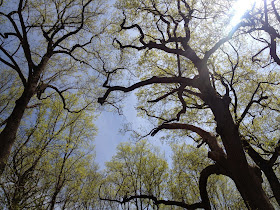




































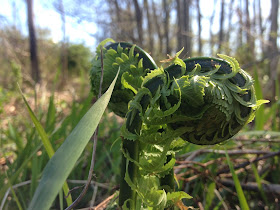


























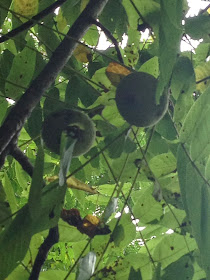














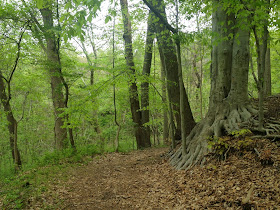
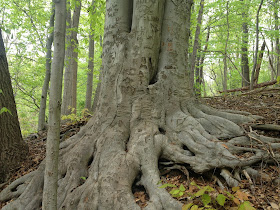











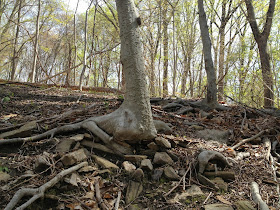















Very nice Mr. Spruce. We enjoy a lot of the same patches of woods and meadows around Philly. I'll be looking at the Andorra shopping center in a different way from now on. I very much enjoy your blogging. Thanks for it.
ReplyDeleteThank you, Jay. Very appreciative of the kind words. It means the world to me.
ReplyDeleteI've only recently found your blog and see that it has come to an end. Even so i look forward to looking back to your previous posts and exploring the city with newly opened eyes. Thank you!
ReplyDeleteI hope you enjoy reading the Philly Trees blog. I had the best time tree-hunting, exploring and writing about the city and its trees. Think of it as a first-person field guide for the trees and for Philadelphia. I hope it leads to your own adventures.
Deletenice post
ReplyDeleteThis comment has been removed by the author.
ReplyDeleteGreat blog. Come out of retirement?
ReplyDeleteI support Rob’s suggestion. I just found the blog and I sorely needed it. Thanks for beautiful prose and attitude.
ReplyDelete